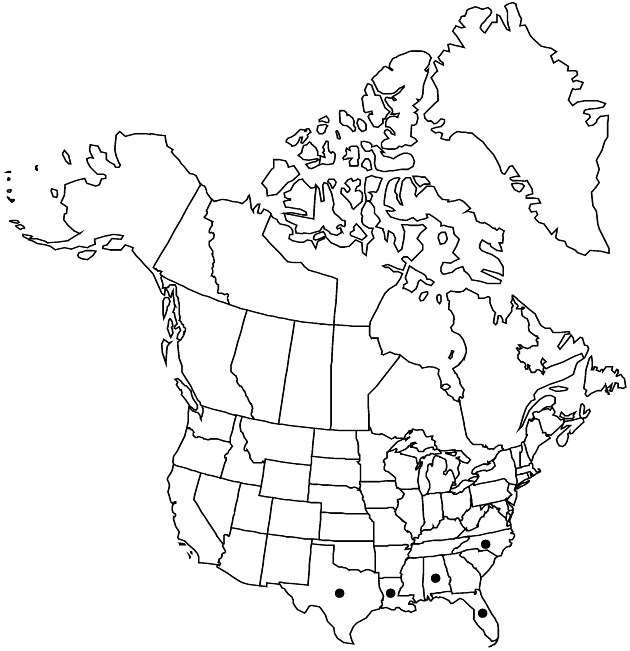Symphyotrichum subulatum var. squamatum
Sida 21: 908. 2004.
Plants 30–150 cm. Stems simple or branched basally. Heads 30–100 in open, diffuse arrays, secund on primary branches longer than peduncles. Involucres 5–7 (–8) mm. Phyllaries 18–24 (–30), subulate to lanceolate (often broadly so), green zones broadly lanceolate, absent from proximal portion. Ray-florets 21–28 (–38) in (2–) 3 series; laminae white (drying white or lavender), 1.3–1.7 (–2) × 0.2–0.3 mm, shorter than pappi, drying in inward curls, rarely coiling. Disc-florets (3–) 7–14, 4–4.9 mm. Cypselae 1.5–2.6 (–3) mm; pappi 4–5.1 (–5.3) mm. 2n = 20.
Phenology: Flowering Jul–Nov.
Habitat: Salt marshes, brackish marshes
Elevation: 0–10 m
Distribution

Introduced; Ala., Fla., La., N.C., Tex., Bermuda, South America, in Europe (France), Asia (Iraq), Asia (Japan), Australia, and elsewhere
Discussion
The name Aster subulatus Michaux var. sandwicensis (A. Gray ex H. Mann) A. G. Jones (Brinttonia 36: 465. 1984) has priority at the varietal level; the combination in Symphyotrichum has yet to be made.
Selected References
None.
Lower Taxa
"thin" is not a number.